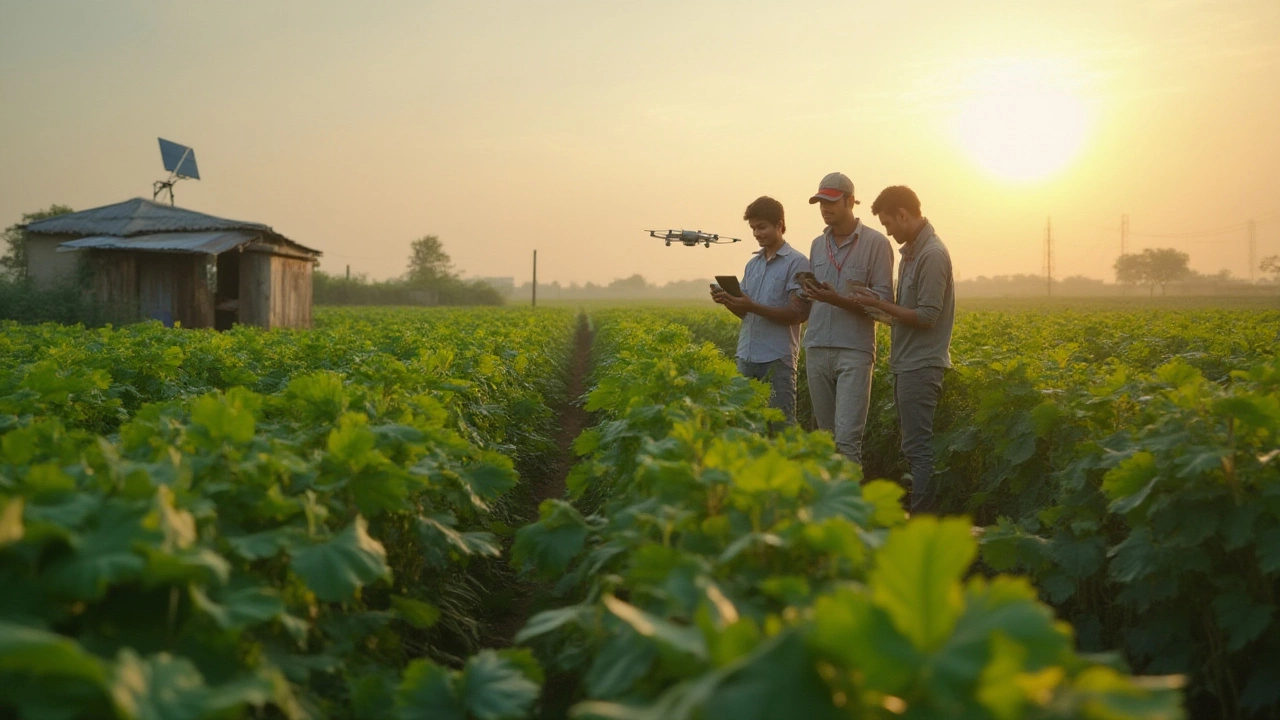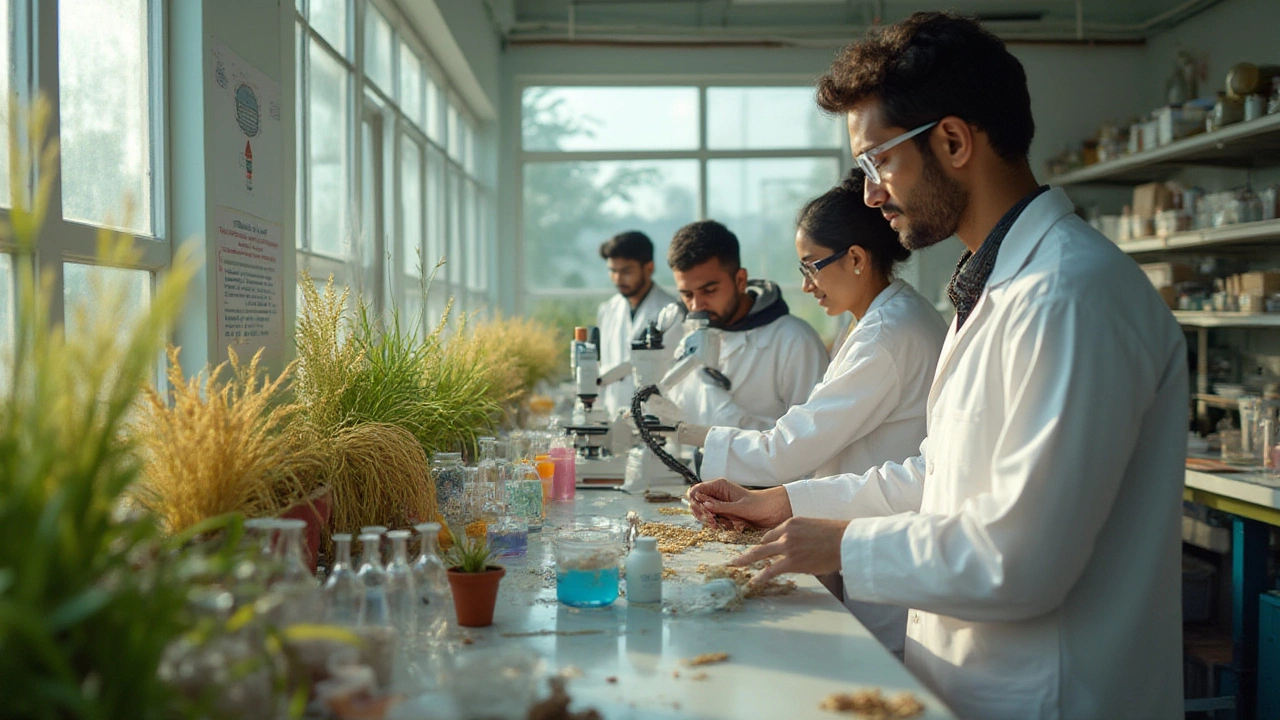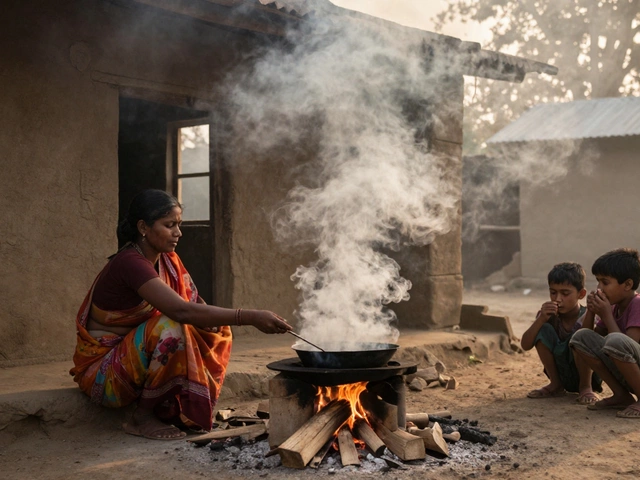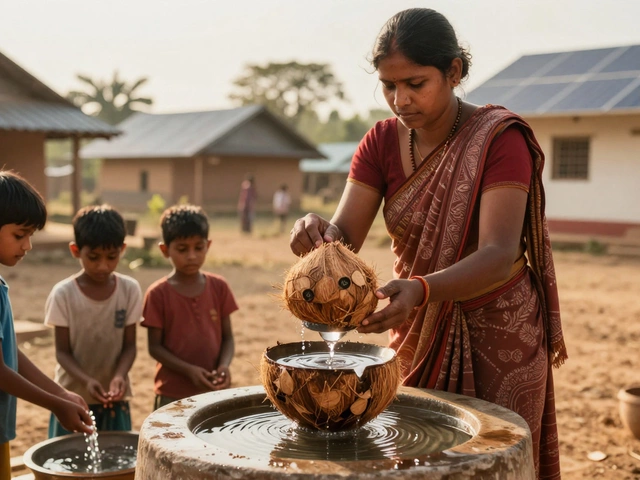Most folks imagine scientists in white coats, staring into microscopes, or running wild experiments in sterile labs. But if you picture an agricultural scientist, the scene’s more interesting. One day, they could be knee-deep in a muddy rice paddy, soaked by the unpredictable monsoon. Another day, they’re fiddling with high-tech drones above a sunflower field or troubleshooting soil sensors from behind a laptop. Why does this matter? Because the food you eat, the crops you see while traveling from Bangalore to Mysore, even the spices that flavor your favorite biryani—all rely on the invisible hand of agricultural science. The magic and sweat behind every mango or grain of rice start from the questions these scientists chase. Let’s pull back the green curtain and see where, exactly, agricultural scientists get their hands dirty and their brains ticking.
Traditional Laboratories and Research Institutes
Not all agricultural scientists spend every day outside in fields; many work in sophisticated labs. India’s got some heavyweights: the Indian Council of Agricultural Research (ICAR), the National Rice Research Institute, and the International Crops Research Institute for the Semi-Arid Tropics (ICRISAT) in Hyderabad to name a few. These spots don’t just crunch numbers—they create drought-resistant seeds, develop biofertilizers that cut water usage, and try to outsmart evolving pests before they wipe out a season’s worth of crops.
What goes on in these places? For one, soil samples travel from remote villages to glass-paned city labs. Scientists run chemical tests, grow plants in controlled climate rooms, and track disease patterns using computer models. ICAR alone employs thousands across dozens of centers, mixing biology, chemistry, is and coding into daily hustle. Some researchers focus on tiny details (think: gene editing in chickpeas), while others zoom out and simulate what climate change means for future wheat harvests. Teams in these institutes rarely fit stereotypes—you’ll find soil chemists, hydrologists, molecular biologists, AI specialists, entomologists, and statisticians arguing over the best way to boost yield without wrecking the environment.
It’s not just about research. Labs also act as training zones for the next crop of scientists. Students pursue internships, PhDs, and postdocs, sometimes splitting time between university classes and real-world field studies. Large research bodies in India often send their people abroad or host foreign experts—ICRISAT, for example, partners with scientists from Africa, Australia, and the US to crack the code for tough soils and stunted yields.
| Leading Indian Research Institutes for Agriculture | Year Established | Location |
|---|---|---|
| ICAR (Indian Council of Agricultural Research) | 1929 | New Delhi + 100+ centers |
| ICRISAT (Int’l Crops Research Inst. for the Semi-arid Tropics) | 1972 | Hyderabad |
| National Rice Research Institute | 1946 | Cuttack, Odisha |
Having the option to flip between the microscope in a climate-controlled greenhouse and big data on a cloud server is what makes these traditional institutes vital to agri-science. They’re not the sleepy government buildings of outdated imagination—they’re jam-packed with ambitious young folks determined to make real-world impact.
On the Field: Farms, Plantations, and Rural Outreach
Step outside the polished labs, and the heartbeat of agricultural science moves onto the land. Fieldwork is rugged, but this is where scientists witness their theories facing real sun, rain, and mud. At Krishi Vigyan Kendras (KVKs)—there are over 700 in India—agricultural scientists run hands-on experiments on actual working farms. Their focus? Finding practical answers to farmer problems. Got an outbreak of leaf curl in your tomatoes? Or maybe a pest munching through groundnuts? These are the frontline battlegrounds.
A big part of the job is demo plots, where scientists set up mini-experiments in partnership with local farmers. Imagine a side-by-side comparison: one half of a field gets traditional seed, the other half an experimental high-yield variety. Over weeks, scientists, farmers, and even students flock to see which plot wins. Real-time feedback, straight from the folks whose livelihoods depend on it, makes the science matter. The insights flow both ways: yes, scientists bring innovation, but they also learn hard truths from decades of local farming wisdom, which often outsmart pure ‘textbook’ solutions.
Plantations—think tea in Assam, coffee in Coorg—employ agricultural scientists to monitor soil health, try precision irrigation, or assess disease outbreaks before they go viral (literally). Some scientists hike up hills with GPS sensors, mapping disease spread tree-by-tree. Others work shoulder-to-shoulder with corporate agronomists, figuring out the best time to plant or harvest for a global export market.
There’s a growing trend in rural tech outreach. Scientists don’t just fly in and out. They set up WhatsApp helplines, radio broadcasts, or use community meetings to explain why mulching beats burning crop residue, or how drip irrigation can save up to 60% water. In many states, agricultural extension programs see scientists racking up kilometers on two-wheelers, traversing dusty roads to get the word out. On-the-ground impact means being able to wear gumboots and talk shop in the village square. It’s not just about data; it’s about trust and relationships too.

Agri-Tech Startups, Corporate Sector, and International Organizations
India’s agri-tech boom isn’t just a metro buzzword. Bengaluru alone has over 500 startups hustling in everything from farm-to-fork logistics to AI-powered pest detection. Here, agricultural scientists swap lab coats for data dashboards. If you’re picturing cubicles, think again—a normal week often means jumping from app development meetings to quick trips to a farm on the city’s outskirts, user-testing soil-sensor prototypes or talking to farmers on video calls for feedback.
Top agri-tech names like CropIn, Ninjacart, and AgroStar aggressively recruit agri-scientists for R&D, field data analysis, and tech-driven extension services. This isn’t just ‘tech’ for the sake of tech. It’s focused on real pain-points: reducing crop wastage, tackling price volatility, or mapping climate risks in faraway districts where government extension can’t reach on its own. A scientist might spend Monday poring over satellite imagery, Tuesday in a brainstorming session with design teams, and Thursday analyzing feedback from users in Gujarat or Tamil Nadu. Flexibility and hands-on curiosity win the day.
Multinationals like Bayer, Syngenta, and Corteva maintain huge crop science R&D teams in India, blending traditional breeding with gene editing and digital modeling. These scientists work on genetic traits that matter locally: heat tolerance for Rajasthan’s wheat, blast resistance for Andhra’s rice farmers. The global exposure—travel, access to cutting-edge tech, collaborating with international colleagues—means career growth can be rocket fast, but there’s always pressure to show real results on sales or sustainability goals.
| Sector | Role(s) for Agricultural Scientists | Estimated Percentage in India (2023) |
|---|---|---|
| Research Institutes & Universities | Faculty, researcher, technician, project scientist | 38% |
| Field/Extension (including KVKs) | Field scientist, extension officer, demonstration leader | 27% |
| Private Sector/Startups | R&D specialist, agronomist, agri-data analyst | 28% |
| International Bodies & NGOs | Consultant, project manager, monitoring & evaluation | 7% |
International agencies—think World Bank, FAO, CGIAR—offer jobs with a global twist. These projects span continents: sustainable rice in Southeast Asia, drought relief for Africa, climate-smart pulses in South Asia. Scientists in these roles fly a lot, troubleshoot projects across time zones, and learn quickly how policies, big money, and boots-on-the-ground action interact. It’s not for everyone, but if your dream is to see your research ripple across borders, these roles can be both stressful and electric.
Emerging Workspaces: Urban Agriculture, Education, and Independent Consulting
The story of where agricultural scientists work is expanding fast. While Indian cities feel far removed from farm fields, urban agriculture is gaining momentum. Rooftop farming, vertical gardens in city malls, or hydroponic projects at tech-park campuses aren’t just Instagram eye-candy—they’re managed by scientists figuring out how to get maximum nutrients from tiny plots. Think mushroom farming under old flyovers or community gardens led by agri-science grads trained to teach city students about where food actually comes from.
Education is another huge slice. Agricultural universities, from the iconic Tamil Nadu Agricultural University to niche research centers in Himachal, need teachers who don’t just spout theories but bring field stories into the classroom. These educators often double as researchers, guiding student projects and running short-term training programs for everyone from rural youth to government officers. With agri-digital skills in demand—GIS mapping, drone piloting, IoT soil sensors—universities scramble to update curriculums so graduates fit into modern jobs, not just dated government roles.
Independent consulting is on the rise, partly thanks to social media and online platforms. Experienced agricultural scientists set up their own shops, helping agribusinesses plan new greenhouses, coaching organic farms, or auditing projects for climate grants. Some freelancers even make a living creating bilingual YouTube channels or podcasts, sharing tips with thousands of followers on how to boost yields or battle plant viruses.
If you’re thinking about a career in agri-science, variety is built in. You can climb the research ladder, launch your own consulting firm, or move between roles every few years. The best bit? The road is never straight, and it almost never gets boring. If you doubt it, just ask anyone who’s ever tried to explain precision farming to a group of skeptical grannies at a rural co-op meeting—or launched a soil testing app from a coffee shop in Indiranagar. This isn’t just a job; it’s a front-row seat to the future of what India eats and grows. So, the next time you bite into a tomato, maybe spare a thought for the invisible scientists behind it all.





